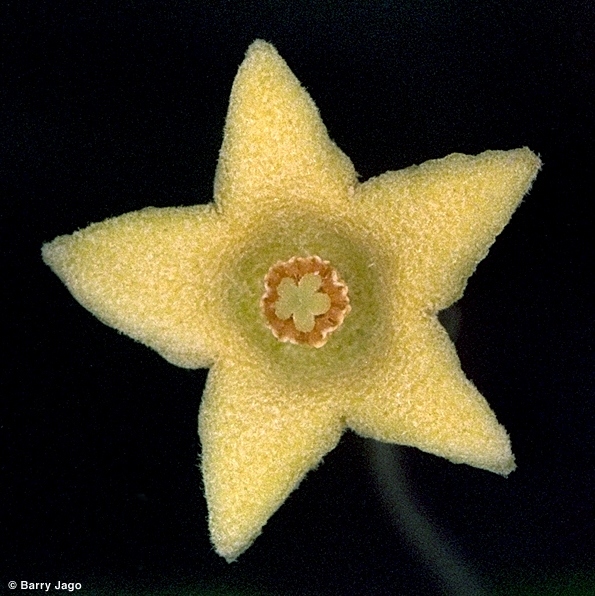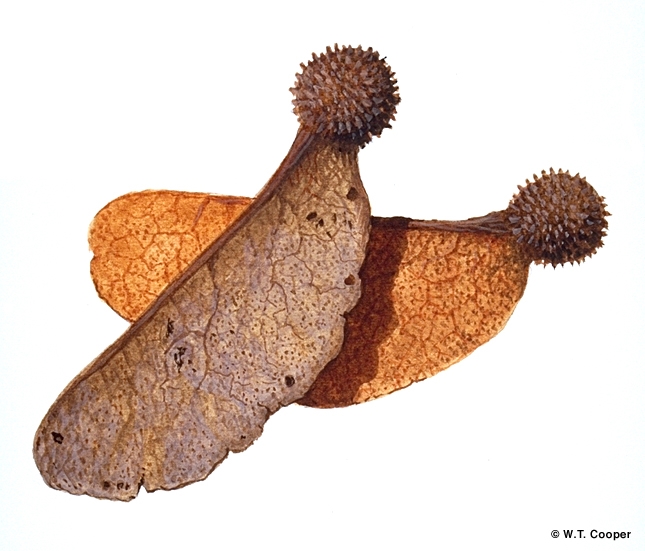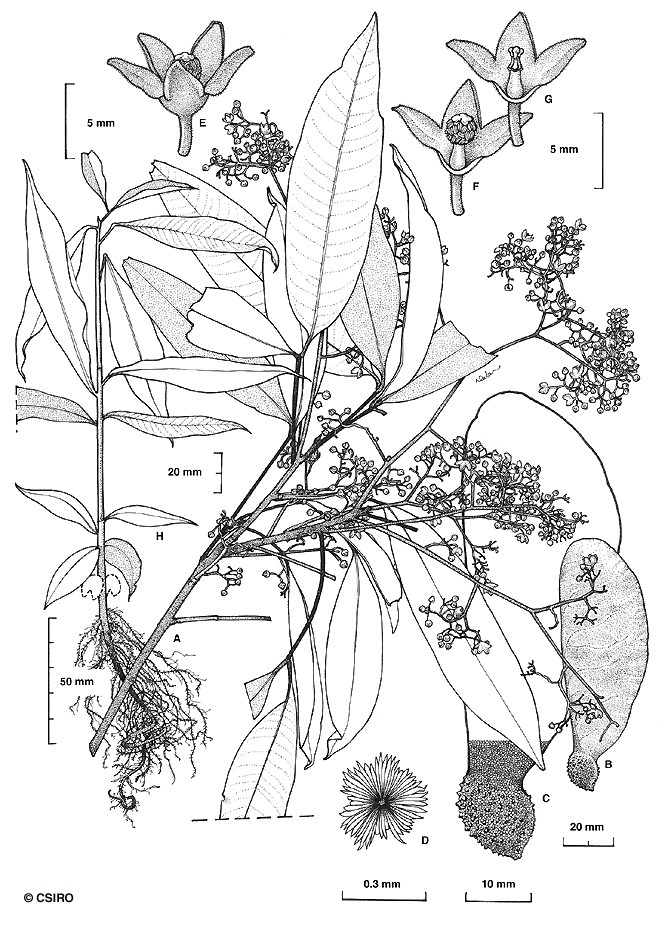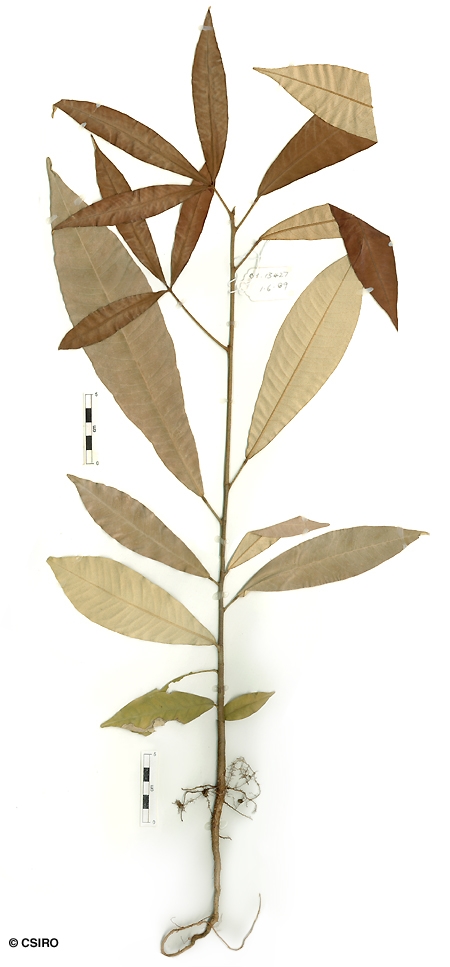Australian Tropical Rainforest Plants - Online edition
Argyrodendron peralatum (F.M.Bailey) Edlin ex J.H.Boas







Boas, J.H. (1947) The Commercial Timbers of Australia : 228.
Red Crowsfoot; Oak, Red Tulip; Red Tulip Oak; Red Crowsfoot Elm
Outer blaze with pink fibrous stripes and white or cream granular stripes. Blaze layering rather fine. Buttresses usually large and conspicuous.
Basal, i.e. globular part of the fruiting carpel echinate or aculeolate. Fruiting carpel + wing about 7-9 cm long.
Cotyledons thick and fleshy, without venation. First pair of leaves elliptic to lanceolate, underside white from scales. At the tenth leaf stage: leaflet blade glabrous on the upper surface, lower surface white from scales, midrib depressed or level with the upper surface; stipules small, linear, clothed in scales; terminal bud clothed in brown scales. Seed germination time 9 to 20 days.
Timber of this species has high electrical insulating properties. Swain (1928).
This timber was formerly used in northern Queensland as flooring. It is hard wearing and when sanded it takes a high polish and is very decorative.
Leaf material of this species was active against some tumors. Collins et al. (1990).
Produces a useful general purpose timber suitable for house construction where not exposed to the weather. Particularly well suited for polished floors.
Wood specific gravity 0.80 Cause et al. (1989).





